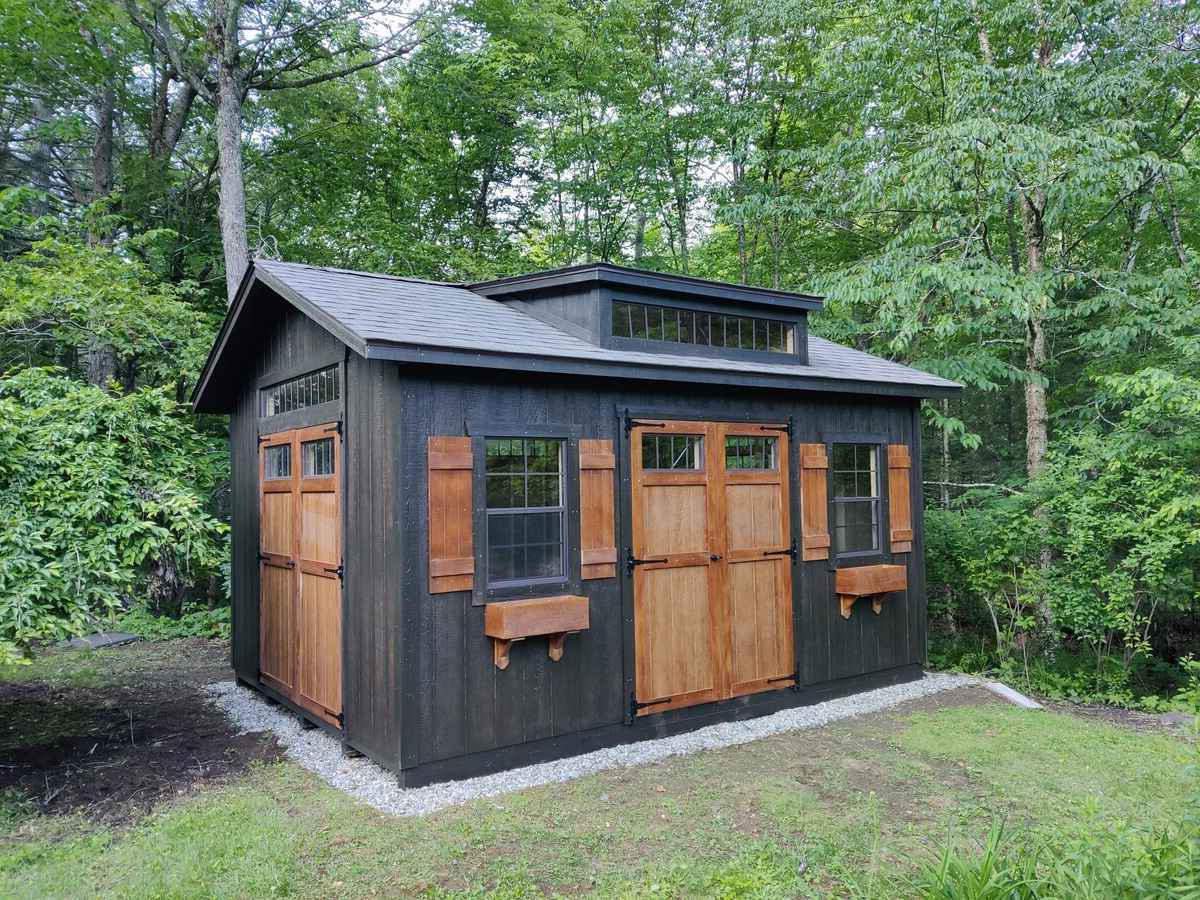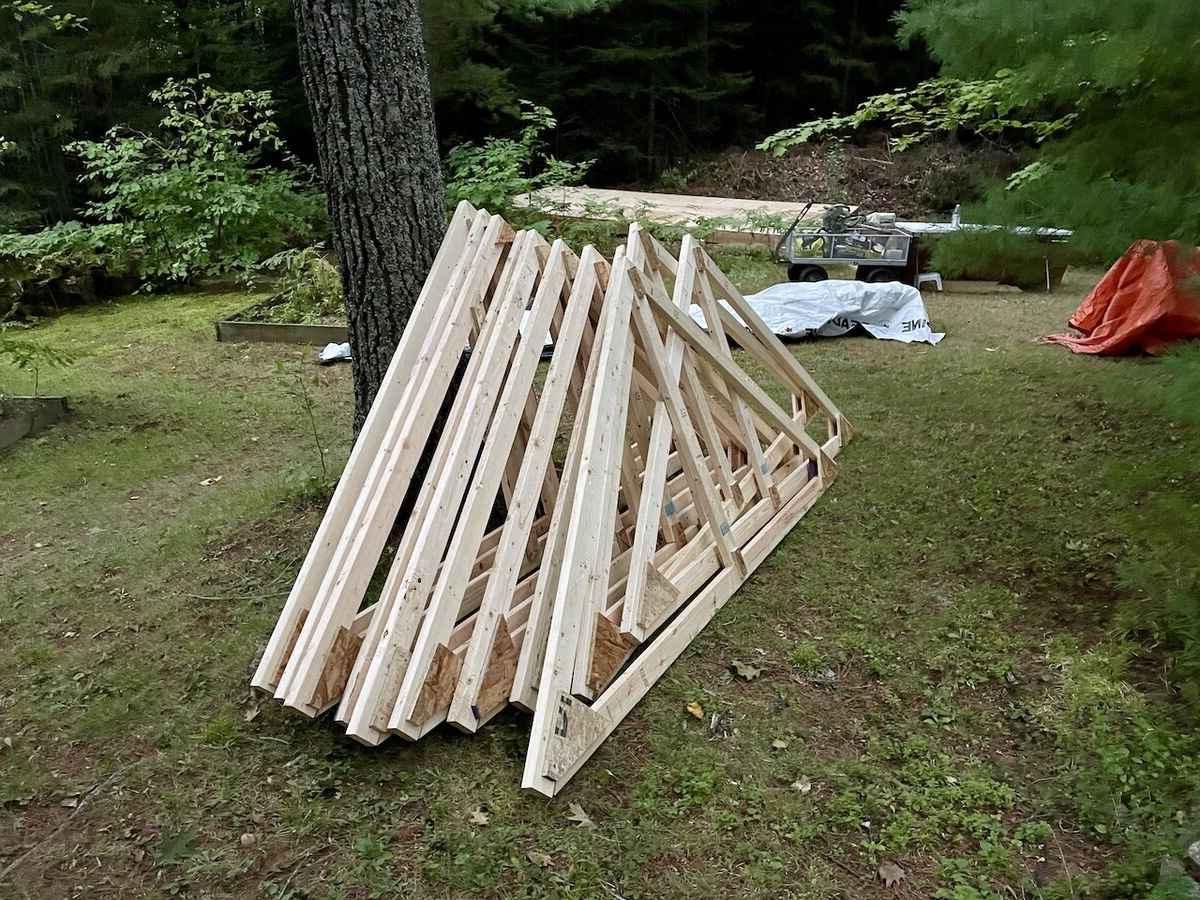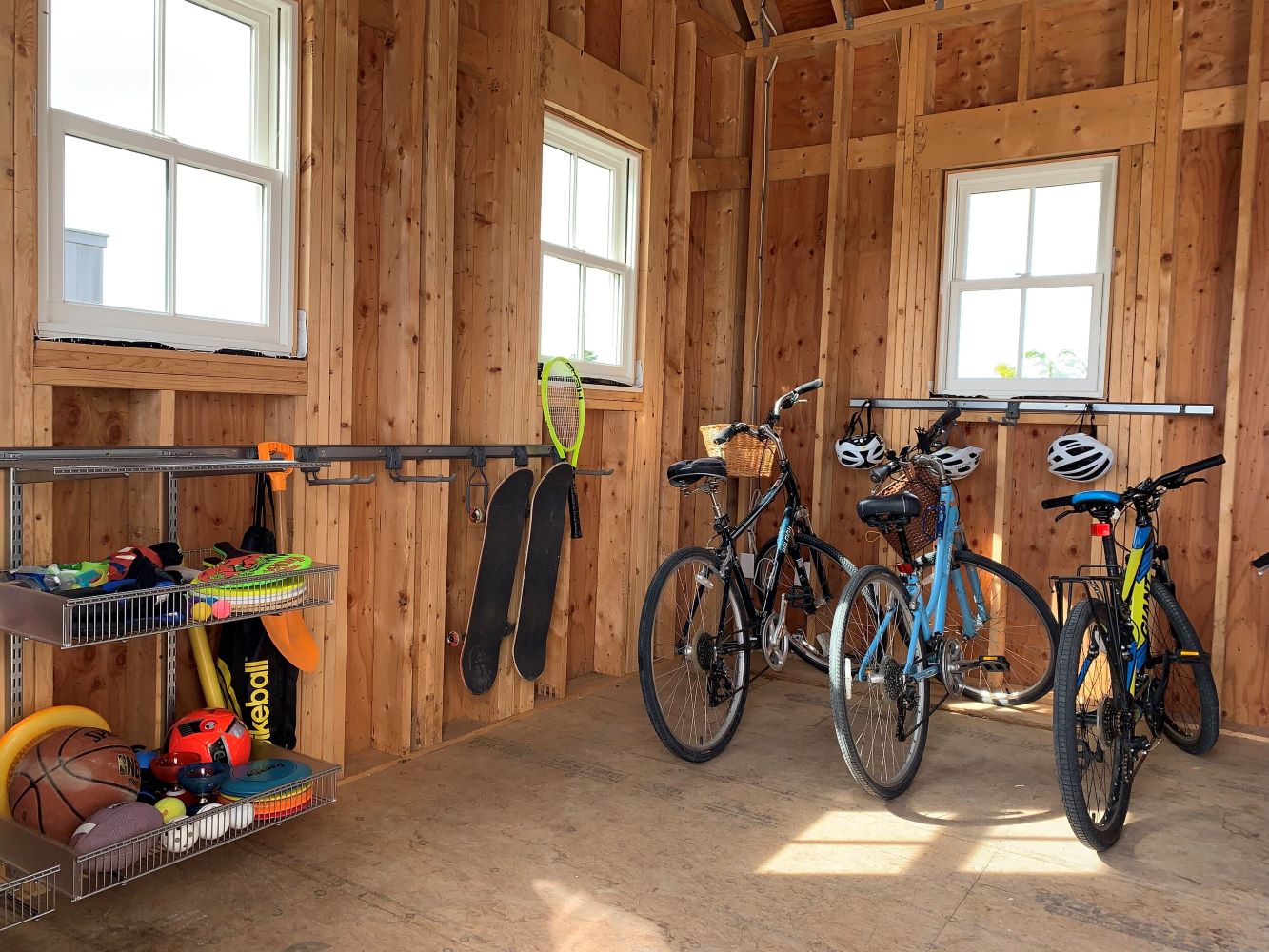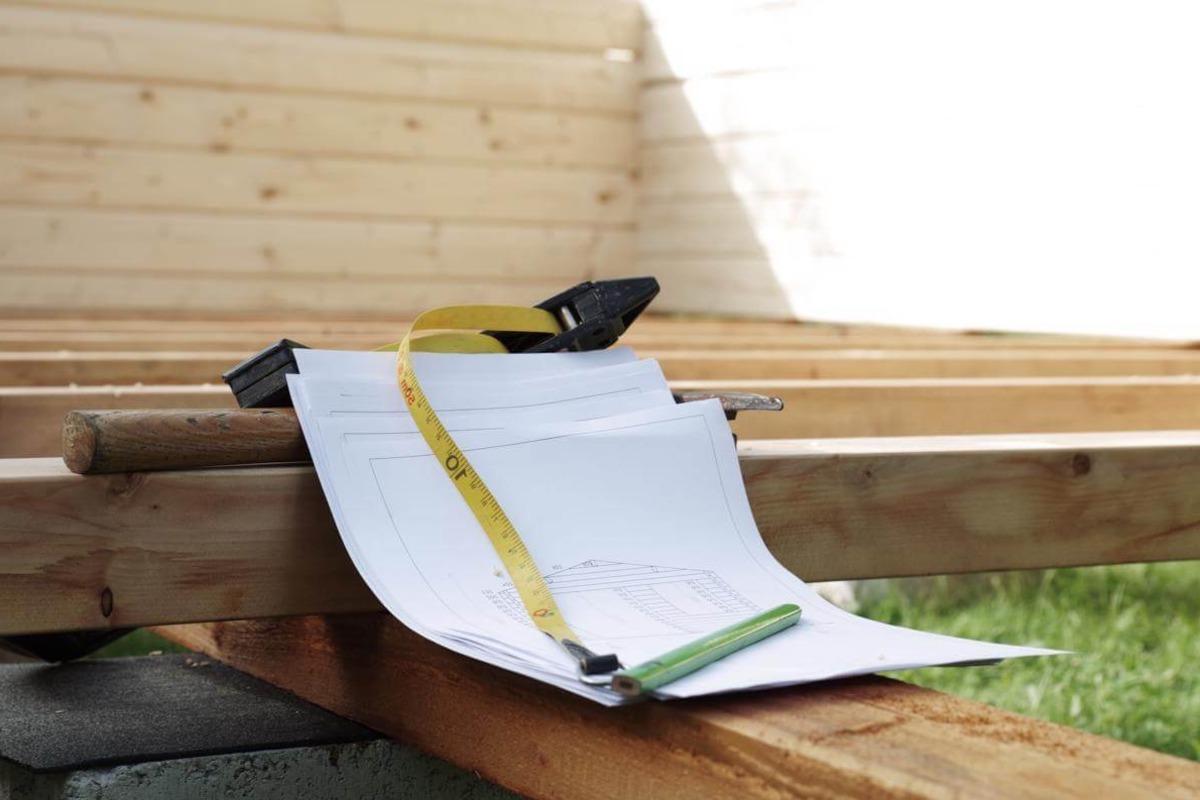Home>Create & Decorate>DIY & Crafts>12×16 Shed Plans: DIY Guide For Building Your Own Outdoor Storage Space


DIY & Crafts
12×16 Shed Plans: DIY Guide For Building Your Own Outdoor Storage Space
Published: February 24, 2024

Senior Editor in Create & Decorate, Kathryn combines traditional craftsmanship with contemporary trends. Her background in textile design and commitment to sustainable crafts inspire both content and community.
Discover comprehensive 12x16 shed plans for your DIY outdoor storage project. Build your own space with our step-by-step guide. Perfect for DIY & Crafts enthusiasts.
(Many of the links in this article redirect to a specific reviewed product. Your purchase of these products through affiliate links helps to generate commission for Twigandthistle.com, at no extra cost. Learn more)
Introduction
Welcome to the ultimate DIY guide for building your very own outdoor storage space with 12×16 shed plans. Whether you're a seasoned DIY enthusiast or a novice looking to embark on your first major construction project, this comprehensive guide will walk you through the step-by-step process of constructing a sturdy and functional shed to meet your storage needs.
Building a 12×16 shed offers a versatile solution for storing garden tools, outdoor equipment, bicycles, and other items that tend to clutter your home or yard. Not only does it provide ample storage space, but it also adds a charming and practical element to your outdoor environment.
By following this guide, you'll gain valuable insights into selecting the ideal location for your shed, gathering the necessary materials and tools, building a solid foundation, constructing the frame, adding the roof and siding, installing doors and windows, and adding finishing touches. Additionally, you'll discover essential maintenance tips to ensure the longevity and durability of your newly constructed outdoor storage space.
Whether you envision a traditional barn-style shed, a modern and sleek design, or a customized structure that complements your home's architecture, this guide will empower you to bring your vision to life. With careful planning, attention to detail, and a willingness to roll up your sleeves, you can create a beautiful and functional 12×16 shed that enhances the aesthetic appeal of your property while serving a practical purpose.
So, roll up your sleeves, gather your tools, and let's embark on this exciting journey of DIY shed construction. Get ready to unleash your creativity, hone your carpentry skills, and enjoy the satisfaction of building a valuable addition to your outdoor space. Let's dive into the process of creating your very own 12×16 shed!
Read more: DIY Garage Shed Plans Guide
Choosing the Right Location for Your Shed
Selecting the optimal location for your 12×16 shed is a crucial first step in the construction process. The chosen spot should not only accommodate the size of the shed but also complement the overall aesthetics of your property. Here's a detailed guide to help you make an informed decision:
Consider Accessibility
Ensure that the location of your shed allows for easy access. It should be conveniently situated for transporting materials during construction and for retrieving stored items once the shed is complete. Additionally, consider pathways, driveways, and gates to ensure that the shed is easily reachable.
Evaluate Sunlight and Shade
Assess the sunlight and shade patterns in your yard throughout the day. While some items, like firewood, may benefit from direct sunlight to aid in drying, others, such as certain tools or equipment, may require protection from excessive heat. By understanding the sunlight and shade dynamics, you can position the shed to best suit your storage needs.
Check Ground Stability
Examine the ground where you plan to place the shed. It should be relatively level and stable to provide a solid foundation for the structure. Avoid low-lying areas that are prone to flooding or areas with poor drainage. Additionally, consider the natural slope of the land to prevent water accumulation around the shed.
Read more: DIY Outdoor Kitchen Gazebo Build
Assess Visual Impact
Consider the visual impact of the shed's placement. While you want the shed to be easily accessible, you also want it to blend harmoniously with your landscape. Take into account the views from your home and neighboring properties to ensure that the shed's location enhances the overall visual appeal of your outdoor space.
Check Local Regulations
Before finalizing the location, familiarize yourself with local building codes and regulations. Some areas have specific requirements regarding the placement of outbuildings in relation to property lines, easements, and other structures. By understanding these regulations, you can avoid potential legal issues and ensure compliance with local ordinances.
By carefully considering these factors, you can confidently choose the perfect location for your 12×16 shed. Once you've identified the ideal spot, you can proceed to the next steps of gathering materials and tools to begin the construction process.
Gathering Materials and Tools
Gathering the necessary materials and tools is a crucial preparatory step before embarking on the construction of your 12×16 shed. By ensuring that you have all the required items at your disposal, you can streamline the building process and minimize interruptions. Here's a comprehensive list of materials and tools you'll need to kick-start your shed construction project:
Materials
- Lumber: Purchase high-quality lumber in the dimensions specified by your shed plans. This will typically include 2x4s for framing, 4x4s for the foundation, and plywood for sheathing.
- Fasteners: Stock up on nails, screws, and other fasteners suitable for outdoor use. Galvanized or stainless steel options are ideal for their corrosion resistance.
- Roofing Materials: Depending on your design preferences, you'll need roofing shingles, metal roofing panels, or other roofing materials to weatherproof your shed.
- Siding: Choose durable and visually appealing siding materials such as T1-11 plywood, vinyl siding, or cedar planks to enclose the exterior walls of the shed.
- Foundation Materials: If your shed plans call for a concrete foundation, gather the necessary concrete mix, gravel, and reinforcement materials. For a skid foundation, pressure-treated skids and concrete blocks will be required.
Read more: DIY Outdoor Concrete Countertops
Tools
- Power Tools: Essential power tools include a circular saw, power drill, and nail gun for efficient cutting and fastening.
- Hand Tools: Stock up on a hammer, tape measure, level, framing square, and other hand tools for precise and accurate construction.
- Safety Gear: Prioritize safety by obtaining protective gear such as goggles, gloves, and a dust mask to safeguard yourself during construction.
- Ladder: A sturdy ladder is indispensable for working at heights during the installation of the roof and siding.
- Workbench: Set up a spacious workbench to serve as a dedicated workspace for assembling and organizing materials.
Additional Considerations
- Shed Plans and Permits: Ensure that you have a clear and detailed set of shed plans that align with your design vision. Additionally, check local regulations to determine if building permits are required for your shed construction project.
- Delivery and Storage: Plan for the delivery and storage of materials. Arrange for the timely delivery of lumber and other bulky items, and designate a dry and secure area to store the materials until they are ready to be used.
By diligently procuring the necessary materials and tools, you can lay a solid foundation for a successful and efficient shed construction project. With everything in place, you'll be well-equipped to move on to the next phase of building the foundation for your 12×16 shed.
Building the Foundation
The foundation serves as the anchor of your 12×16 shed, providing stability and structural integrity. Before commencing the construction of the foundation, it's essential to carefully review your shed plans to determine the specific requirements for this critical stage of the project. Here's a detailed overview of the steps involved in building a solid foundation for your outdoor storage space:
Choose the Foundation Type
Depending on your shed design and local building codes, you may opt for a concrete slab, skid foundation, or concrete piers. Each type offers distinct advantages, and your choice should align with the specific needs of your shed and the characteristics of your property. A concrete slab provides a permanent and level base, while a skid foundation offers portability and easy relocation if necessary. Concrete piers are suitable for uneven terrain and provide excellent support for the shed.
Read more: How to Build a Traeger Outdoor Kitchen
Prepare the Site
Clear the designated area for the foundation, removing any vegetation, rocks, or debris. Use a shovel, rake, and a level to ensure that the ground is level and free from obstructions. If you're constructing a concrete slab, excavate the area to the required depth, allowing for the thickness of the concrete and a suitable base material. For a skid foundation, ensure that the ground is level and compacted to provide a stable surface for the skids.
Install Formwork
If you're opting for a concrete foundation, construct formwork to define the perimeter of the slab. Use sturdy boards and stakes to create a frame that will contain the concrete during pouring. Ensure that the formwork is precisely aligned and leveled to achieve a uniform thickness for the slab.
Pour and Level the Concrete
Once the formwork is in place, it's time to pour the concrete. Prepare the concrete mix according to the manufacturer's instructions, ensuring the proper ratio of cement, aggregate, and water. Pour the concrete into the formwork, spreading it evenly with a screed board to achieve a smooth and level surface. Use a bull float to further level the concrete and eliminate any imperfections.
Construct Skids or Piers
For a skid foundation, position pressure-treated skids on the prepared ground, ensuring that they are parallel and adequately spaced to support the shed. Use a level to confirm that the skids are perfectly horizontal. Alternatively, if you're installing concrete piers, carefully follow the specifications in your shed plans to determine the placement and depth of the piers, ensuring that they are accurately positioned to bear the weight of the shed.
Read more: DIY Outdoor Bathroom Renovation Guide
Allow for Curing and Setting
Regardless of the foundation type, allow the concrete to cure and set according to the recommended timeline provided by the concrete manufacturer. This crucial phase ensures that the concrete achieves its full strength and durability, providing a reliable base for the shed. For skid foundations and piers, confirm that the components are securely in place and ready to support the shed's frame.
By meticulously executing the foundation construction process, you'll establish a robust and dependable base for your 12×16 shed. With the foundation in place, you can progress to the next stages of constructing the frame, adding the roof and siding, and bringing your vision of a functional and aesthetically pleasing outdoor storage space to fruition.
Constructing the Frame
Constructing the frame of your 12×16 shed is a pivotal phase that lays the groundwork for the overall structure and stability of the building. This stage involves assembling the skeleton of the shed, which will support the walls, roof, and doors. Here's a detailed overview of the essential steps involved in constructing the frame:
Prepare the Lumber
Begin by organizing the lumber according to the specifications outlined in your shed plans. Ensure that the lumber is of high quality and free from defects that could compromise the structural integrity of the frame. Cut the lumber to the required dimensions using a circular saw, following precise measurements to achieve accuracy and consistency.
Build the Floor Frame
Start by constructing the floor frame, which serves as the base of the shed. Assemble pressure-treated joists and rim joists to form a sturdy rectangular frame, ensuring that the corners are square and the joists are evenly spaced. Use galvanized nails or screws to secure the joints, creating a robust foundation for the shed.
Read more: DIY Outdoor Grill Station with Roof
Erect the Wall Frames
With the floor frame in place, proceed to erect the wall frames. Position the pre-cut studs vertically between the top and bottom plates, aligning them according to the layout specified in your shed plans. Use a level to ensure that the wall frames are plumb and straight, securing them in position with nails or screws. Incorporate openings for windows and doors as per your design preferences.
Install the Roof Trusses
Once the wall frames are securely in place, it's time to install the roof trusses. These structural components provide the framework for the roof and contribute to the overall stability of the shed. Carefully lift and position the pre-assembled trusses onto the wall frames, ensuring that they are evenly spaced and aligned. Secure the trusses to the top plates of the wall frames, maintaining uniformity and structural integrity.
Strengthen the Frame
To reinforce the frame, add diagonal braces to the wall frames and secure them with appropriate fasteners. These braces enhance the rigidity of the structure, minimizing sway and ensuring that the shed can withstand external forces. Additionally, install blocking and nailing gussets at key junctions to further fortify the frame and enhance its durability.
Verify Alignment and Stability
Once the frame is fully assembled, meticulously inspect the alignment and stability of the structure. Confirm that the walls are plumb, the corners are square, and the entire frame is structurally sound. Address any discrepancies or issues promptly to ensure that the frame serves as a solid and reliable foundation for the next phases of construction.
By methodically executing the process of constructing the frame, you'll establish a robust and well-engineered skeleton for your 12×16 shed. This critical stage sets the stage for adding the roof and siding, installing doors and windows, and ultimately transforming your vision of a functional and visually appealing outdoor storage space into reality.
Read more: How to Build a Walk-In Closet
Adding the Roof and Siding
Adding the roof and siding to your 12×16 shed marks a significant milestone in the construction process, as it not only enhances the structural integrity of the building but also contributes to its weather resistance and aesthetic appeal. Here's a detailed overview of the essential steps involved in adding the roof and siding to your outdoor storage space:
Roof Installation
-
Prepare Roofing Materials: Gather the roofing materials specified in your shed plans, which may include asphalt shingles, metal roofing panels, or other suitable options. Ensure that you have the necessary underlayment and flashing to provide additional weather protection.
-
Install Roof Sheathing: Begin by installing the roof sheathing, typically made of plywood or oriented strand board (OSB), over the roof trusses. Secure the sheathing to the trusses using appropriate fasteners, ensuring a solid and even base for the roofing materials.
-
Apply Roofing Material: Depending on your chosen roofing material, carefully follow the manufacturer's guidelines for installation. Whether you're laying shingles or securing metal panels, precision and attention to detail are crucial to achieve a watertight and durable roof.
-
Add Flashing and Trim: Install flashing around roof penetrations, such as vents and chimneys, to prevent water infiltration. Additionally, apply trim along the roof edges to provide a finished look and further protect the roof's perimeter.
Siding Installation
-
Select Siding Materials: Choose the siding materials that align with your design preferences and provide the desired level of durability and visual appeal. Common options include T1-11 plywood, vinyl siding, cedar planks, or composite panels.
-
Prepare the Walls: Ensure that the exterior walls of the shed are clean, dry, and free from any protrusions. If necessary, apply a weather-resistant barrier, such as building wrap, to provide an additional layer of protection against the elements.
-
Install Siding Panels: Begin attaching the siding panels to the walls, starting from the bottom and working your way up. Follow the manufacturer's instructions for fastening methods and spacing, ensuring that the panels are securely affixed and properly aligned.
-
Address Openings and Corners: Pay special attention to openings for doors and windows, as well as the corners of the shed. Properly trim and finish these areas to maintain a cohesive and weather-resistant exterior.
By meticulously executing the installation of the roof and siding, you'll fortify your 12×16 shed with essential weatherproofing and visual enhancements. These elements not only contribute to the functionality and longevity of the shed but also elevate its overall appearance, creating a striking and durable outdoor storage space. With the roof and siding in place, your shed is poised to receive its final touches, including the installation of doors and windows, bringing you one step closer to enjoying a fully functional and aesthetically pleasing addition to your property.
Installing Doors and Windows
Installing doors and windows is a pivotal phase in the construction of your 12×16 shed, as it not only enhances the functionality and accessibility of the structure but also contributes to its overall aesthetics and ventilation. Here's a detailed guide to the essential steps involved in installing doors and windows to complete your outdoor storage space:
Preparing the Openings
Begin by carefully measuring and marking the locations for the doors and windows according to your shed plans. Ensure precise and accurate measurements to facilitate the seamless installation of these essential components. Use a framing square and level to outline the openings, confirming that they are square and plumb.
Installing the Doors
Select high-quality exterior doors that are suitable for the dimensions and design of your shed. Whether you opt for a single or double door configuration, ensure that the doors are equipped with sturdy hinges and secure locking mechanisms. Position the doors within the designated openings, ensuring a proper fit and alignment. Secure the doors to the frame using heavy-duty hinges and install the appropriate hardware, such as handles and locks, to complete the installation.
Adding Windows
Choose windows that complement the style and functionality of your shed while providing adequate natural light and ventilation. Position the windows within the framed openings, ensuring a snug fit and proper alignment. Secure the windows in place using appropriate fasteners, ensuring that they are level and operable. Apply weather-resistant sealant around the perimeter of the windows to prevent water infiltration and enhance their durability.
Enhancing Security and Functionality
Once the doors and windows are installed, verify that they open and close smoothly, and that they provide a secure seal when closed. Test the locking mechanisms to ensure that they function effectively, providing the necessary security for the contents of your shed. Additionally, consider adding window screens to keep insects out while allowing fresh air to circulate within the shed.
Read more: DIY Teardrop Camper Kitchen Build
Finishing Touches
To complete the installation, apply trim around the doors and windows to provide a polished and cohesive appearance. Use weather-resistant trim materials to ensure durability and visual appeal. Additionally, consider adding window shutters or decorative accents to enhance the aesthetic charm of your shed's exterior.
By meticulously executing the installation of doors and windows, you'll elevate the functionality, security, and visual appeal of your 12×16 shed. These essential components not only provide convenient access and natural light but also contribute to the overall charm and practicality of your outdoor storage space. With the doors and windows in place, your shed is primed to serve as a versatile and inviting addition to your property.
Finishing Touches and Maintenance Tips
With the major construction phases completed, it's time to focus on the finishing touches that will enhance the functionality, aesthetics, and longevity of your 12×16 shed. Additionally, incorporating effective maintenance practices will ensure that your outdoor storage space remains in optimal condition for years to come.
Exterior Finishes
Consider adding exterior finishes that not only protect your shed from the elements but also contribute to its visual appeal. Applying a weather-resistant sealant or paint to the exterior surfaces will safeguard the wood from moisture, UV exposure, and other environmental factors. Choose a finish that complements your property's aesthetic and provides long-lasting protection.
Interior Organization
Optimize the interior space of your shed by incorporating organizational solutions such as shelves, hooks, and storage bins. By strategically arranging your tools, equipment, and other items, you can maximize storage capacity and streamline access to your belongings. Additionally, consider installing a workbench or tool rack to create a functional workspace within the shed.
Read more: DIY Outdoor Kitchen Ideas
Landscaping and Pathways
Integrate your shed seamlessly into your outdoor environment by enhancing its surroundings. Consider landscaping around the shed with plants, shrubs, or decorative stones to create an inviting and harmonious setting. Furthermore, establish clear pathways leading to the shed to facilitate easy access and ensure that the area remains tidy and well-maintained.
Security Measures
Prioritize the security of your shed by installing robust locks on the doors and windows. Consider adding motion-activated lighting or a security system to deter potential intruders. By implementing these security measures, you can safeguard valuable tools and equipment stored within the shed.
Regular Maintenance
Implement a routine maintenance schedule to preserve the condition of your shed. Regularly inspect the roof for any signs of damage or wear, and promptly address any issues to prevent water infiltration. Additionally, treat the exterior wood surfaces with a protective sealant or paint as needed to maintain their integrity and appearance. Keep the interior clean and organized to prevent clutter and ensure that stored items remain in good condition.
Seasonal Considerations
Adjust your maintenance efforts based on seasonal changes. In colder months, ensure that the shed is adequately insulated to protect its contents from freezing temperatures. Clear snow and ice from the roof to prevent structural strain. During warmer months, inspect for signs of pest activity and address any vulnerabilities to keep the shed pest-free.
By attending to these finishing touches and implementing proactive maintenance practices, you can ensure that your 12×16 shed remains a valuable and reliable asset on your property. With careful attention to detail and regular upkeep, your outdoor storage space will continue to serve its purpose effectively while enhancing the overall appeal of your outdoor environment.
Read more: How to Build a DIY Jeep TJ Roof Rack
Conclusion
Congratulations on completing the construction of your 12×16 shed! This remarkable journey of DIY craftsmanship has culminated in the creation of a versatile and functional outdoor storage space that not only meets your practical needs but also adds a charming and practical element to your property. As you reflect on the entire process, from selecting the ideal location to adding the finishing touches, it's evident that your dedication and attention to detail have resulted in the successful realization of your vision.
Your shed stands as a testament to your creativity, perseverance, and commitment to enhancing your outdoor environment. It serves as a valuable addition that not only provides ample storage for garden tools, outdoor equipment, and other items but also contributes to the overall aesthetic appeal of your property. The careful consideration given to the selection of materials, the precision in constructing the foundation and frame, and the meticulous attention to detail in adding the roof, siding, doors, and windows have collectively contributed to the creation of a durable and visually appealing structure.
As you begin to integrate your shed into your daily routines, whether it's organizing gardening supplies, setting up a DIY workshop, or simply enjoying the convenience of having a dedicated storage space, you can take pride in the fact that you've built a practical and enduring asset. The sense of accomplishment that comes with completing this project is truly gratifying, and the skills and knowledge you've gained along the way will undoubtedly empower you in future DIY endeavors.
Moving forward, as you enjoy the functionality and charm of your newly constructed shed, remember to implement the maintenance tips and seasonal considerations outlined in this guide to ensure that your outdoor storage space remains in optimal condition for years to come. By prioritizing regular upkeep and proactive care, you can preserve the integrity and longevity of your shed, allowing it to continue serving its purpose effectively.
Ultimately, the completion of your 12×16 shed represents more than just the construction of a physical structure; it embodies the fulfillment of a vision, the cultivation of practical skills, and the creation of a space that enriches your lifestyle. Whether you're admiring the shed from your home, organizing tools within its walls, or simply reveling in the satisfaction of a job well done, your DIY journey has left an indelible mark on your property and your personal sense of accomplishment.
As you embark on future projects and continue to explore the realm of DIY and craftsmanship, may the experience gained from building your 12×16 shed serve as a source of inspiration and motivation. Your dedication to creating a functional and aesthetically pleasing outdoor storage space is a testament to the power of creativity, perseverance, and the joy of hands-on construction. Congratulations once again on the successful completion of your 12×16 shed, and may it continue to enrich your life for years to come.






